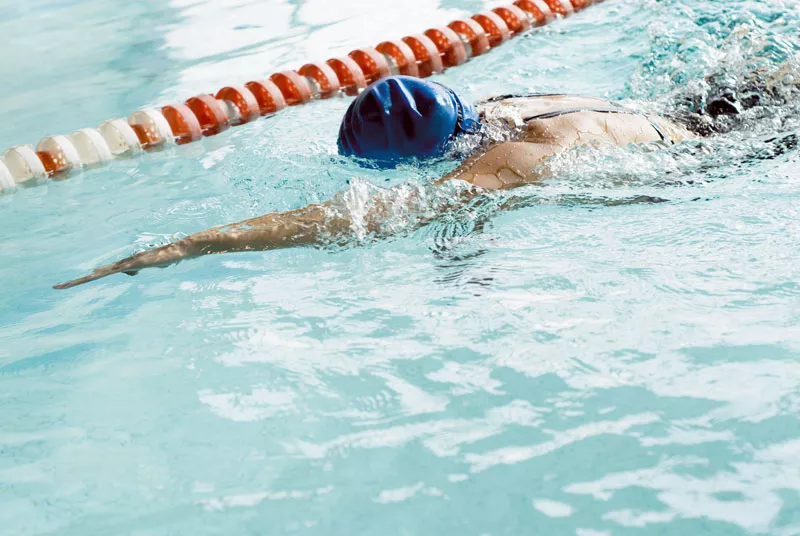The shoulder is such a clever joint. With the upper arm bone nimbly suspended by delicately balanced muscles and ligaments in a shallow spoon-like cup, the shoulder’s architecture allows maximum motion in every direction. But all that range of motion can come at a price. Especially when we suddenly take on the delights of summer — swimming, baseball, softball, tennis. The result? Shoulder pain.
Barb Eliason says her shoulder hurt, but she didn’t let the discomfort stop her from doing what she loved — swimming. “I found other ways to swim. I really favored my arm and couldn’t do anything with it. I just basically swam without using my one arm. I couldn’t even let it fl oat because it would hurt so bad, so I held it to my side and did a one-handed breast stroke or side stroke,” Eliason reports.
The condition persisted for three years before she decided to seek physical therapy from John McKinnon, PT of Four Seasons Physical Therapy in North Spokane. After evaluating her, McKinnon found she had hypermobility, or excessive motion, at her shoulder joint.
“This hypermobility leads to instability of the shoulder which can cause tendonitis or other shoulder problems,” McKinnon explains. “So, commonly we treat the tendonitis, but the pain keeps coming back because we do not treat the real problem, which is the instability.”
Instability occurs when the muscles and ligaments that surround the shoulder joint allow too much motion between the bones. “When people were young and were working out three times per week, they didn’t have any problems because they were strong,” says McKinnon. Things have a way of changing. “Now that they are in their 40s and they play softball just once a week, even though they have good mobility, they have lost their strength so they develop injuries.”
One common mistake is to stretch the sore area. Unfortunately, in this case, stretching makes the problem worse because it causes the joint to become even looser.
So how did McKinnon help Eliason? To decrease pain, he showed her how good posture helps place the shoulder in a better position to function correctly. He also emphasized strengthening rather than stretching. Initially, she performed gentle exercises with her arm at her side. Later, she progressed to activities that “loaded” the shoulder, causing all the muscles around the joint to engage and help the joint tighten down. These exercises included standing wall pushups, as well as standing reverse pushups, which required her to hold onto a bar or rail at about shoulder height, lean back and pull herself back to the bar and repeat. Armchair push-ups, or “dips,” can also be a good exercise, but McKinnon emphasizes, “Make sure your hands are always even with your hips and not behind them since this can cause undue stress on the shoulders.”
A key point is to always protect the shoulder. “One of the common mistakes that people make,” McKinnon says, “is when they reach back in their car to get something out of the back seat, they stretch the shoulder at its end range, and then they load it by picking up something. This combination causes increased stress on a person with shoulder instability.” It is very important to stay away from pain at all times, even with the exercises.
The most important part of this program is to stick with it consistently for six to 12 weeks. Eliason did just that: “I am still doing my exercises daily about 20 minutes a day.” She’s now back to her daily swimming program, pain-free, with both arms.
Marie Cole is a physical therapist and instructor in the PT assistant program at SFCC.

